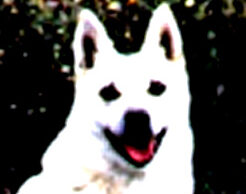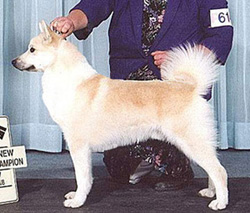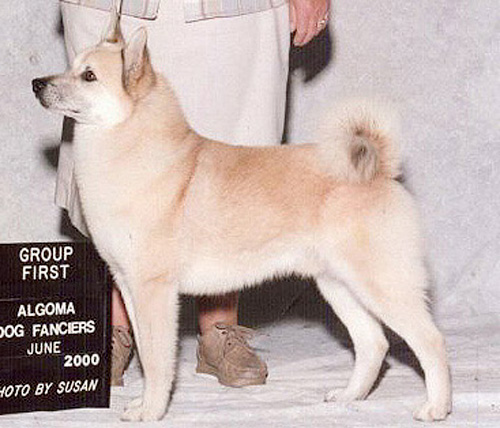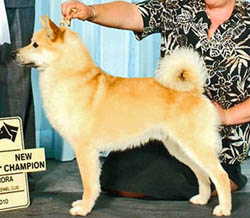Kyon Kennel’s owner Karin Klouman has life-long knowledge and experience with Buhunds starting as a child in her home-country of Norway where her grandparents had Buhunds. When Karin decided to import this breed to Canada, she searched Norway for a top-notch breeding kennel and selected an outstanding breeding pair Leitegard’s Dristig-per Kyon (Per) Per and Leitegard’sGodemine Kyon, from Leitegard kennels. These two Buhunds became our foundation breeding stock. Later we imported the first Canadian champion, the stunning ch Leitegard’s Trofast Peik Kyon. A few years later came the top-winning nor/can ch Treholmen’s Drillo, then followed by ch Leitegard’s frode jarl – and finally we have welcomed our incredible Tomba JWW-08 NV-09 nor/can ch Vaulartun’s Tomba Kimura.
We are proud to say that Kyon Norwegian Buhunds are now found coast to coast in Canada as well as across the US. Kyon Kennels , however, continues to be the main breeder of Norwegian Buhunds in Canada.
Breed History
The Norwegian Buhund belongs to the family of Spitz dogs that has been known in Scandinavia since before the Viking times (800 A.D.). It has been referred to as a separate breed in historical literature since the 1600s, but archeological finds suggest that a dog of similar type and structure was part of the Nordic farm life since the earliest of times. The Buhund is the original Norwegian farm-dog. The word “BU” refers both to “BUskap” and “BUstad” which translates into “livestock” and “homestead”. Herein lies the purpose of the Norwegian Buhund: An excellent herding dog and guardian of livestock as well as home. Since the 1920s there have been serious attempts to preserve the Buhund in Norway. In 1926 the first Buhund shows were held in conjunction with country livestock fairs to revive the breed and select proper type for breeding purposes. An exceptional male from this time became the “father” of the modern Buhund. He was called “Flink” and was given registration number one in the first official Buhund registry. Outside of Scandinavia the Norwegian Buhund is also a popular show dog and family pet in England. Unfortunately the Norwegian Buhund remains a rare breed in danger of extinction.
Buhund’s General Appearance
The Buhund is a lightly yet strongly built, short bodied, balanced and compact dog with erect ears and well-curled tail over the back. Ideal size for adult males is a shade under 18 inches, with females a bit smaller. The most common colour is self-coloured wheaten (clear is preferred, some shading is accepted, but not ideal) Also accepted is black. At Kyon we only breed a clear wheaten. Some symmetrical white markings (narrow collar, white feet) are accepted, but should be minimally noticeable and are overall not preferable, although not a serious fault. The coat is relatively short and smooth with a harsh overcoat and soft wooly undercoat. Males carry more ruff than females and also usually have a slightly longer coat. Dark masks on face are common, but should be limited to the muzzle. Reverse masks (lighter colour on muzzle and face than the surrounding coat) are also accepted. Tipping to ears and tail is also acceptable. » View our photo gallery of typical Kyon Norweigan Buhund Puppies.
Norwegian Buhund Temperament
The Buhund is a friendly and outgoing dog. Like most working and herding breeds he is easily trained, is a good watchdog and very loyal. He is agile and alert, loves to play and is very fond of children. A good Buhund is never nervous, nor aggressive, but a fun-loving spirit that gets along well with both people and other dogs. The eager and alert attitude of a typical Norwegian Buhund makes for an excellent show dog as well as top scoring obedience dog . Most Buhunds love the sport of agility.






